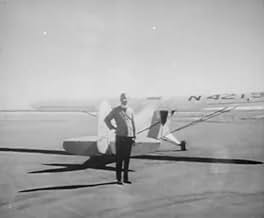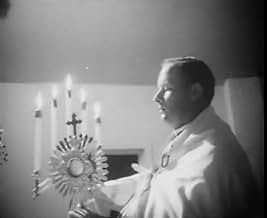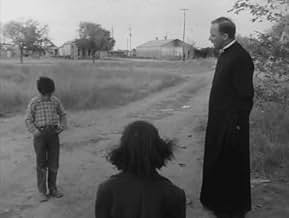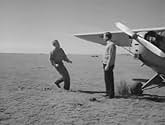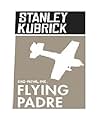Füge eine Handlung in deiner Sprache hinzuTwo days in the life of priest Father Fred Stadtmuller whose New Mexico parish is so large he can only spread goodness and light among his flock with the aid of a monoplane. The priestly pil... Alles lesenTwo days in the life of priest Father Fred Stadtmuller whose New Mexico parish is so large he can only spread goodness and light among his flock with the aid of a monoplane. The priestly pilot is seen dashing from one province to the next at the helm of his trusty Piper Cub admin... Alles lesenTwo days in the life of priest Father Fred Stadtmuller whose New Mexico parish is so large he can only spread goodness and light among his flock with the aid of a monoplane. The priestly pilot is seen dashing from one province to the next at the helm of his trusty Piper Cub administering guidance (his plane, the Flying Padre) to unruly children, sermonizing at funeral... Alles lesen
- Regie
- Drehbuch
- Hauptbesetzung
Empfohlene Bewertungen
It's really hard to find any Kubrick's later trademarks here, in fact it's nearly impossible even recognize it's directed by him if you don't know it already nor catch his name in the opening credits. I really wouldn't recommend this except for its curiosity values.
'Flying Padre' is a cheery nine-minute documentary detailing the kind-hearted exploits of a priest in an isolated country region. Equipped with his $2000, single-motor plane, The Spirit of St. Joseph, this "flying padre" is able to spread his compassion and goodwill across a 1200 mile expanse, never asking anything in return for his unwavering commitment to society. The film follows the priest across two "ordinary days," as he attends to such diverse errands as a country funeral, a child bully, a sick baby and looking after his flock of breeding canaries.
If it hadn't been for a tiny director credit at the beginning of the film, I would never have guessed that Kubrick was involved in any way. The acting is quite poor and, despite the narrator's assurances that all these adventures are happening spontaneously, it's obvious that most of the shots have been pre-planned. How, otherwise, can they explain that the cameraman reached the house of the sick baby long before the padre ever did?! On a side note, however, I did enjoy the very final shot of the film, as the ambulance carrying the sick baby accelerates away from the priest standing beside his plane. From the retreating car's point of view, we watch as the humble padre and his beloved Spirit of St. Joseph diminish into the distance.
Narrated by CBS announcer Bob Hite, "Flying Padre" tells the story of two days in the life of Father Fred Stadtmuller, a Catholic priest in rural New Mexico with a very particular way of reaching the people of his 400-square mile parish. Since his parish is too large and the roads of New Mexico aren't really good, Father Stadmuller uses a Piper Cub airplane to travel to whenever his people needs him, offering not only spiritual help, but sometimes also physical. Through the film, we follow this "Flying Padre" through his daily obligations, which not only include giving sermons at the church or helping people to solve their differences peacefully, as Father Stadmuller also uses his plane to help people in emergencies. In the movie for example, Father Stadmuller takes a sick child and his mother from their isolated ranch to the nearest hospital.
Based on Stadtmuller's experiences as priest of the New Mexico community of Mosquero, Stanley Kubrick wrote the screenplay for this brief recounting of several of Stadtmuller's adventures as Mosquero's "Flying Padre". Contrary to what the narration may tell, while the events portrayed in the movie did happen, what we see on screen is only a reenactment of them, not an actual depiction of Stadtmuller at work. Despite the fact that what it's on screen is obviously staged, Kubrick makes a great job at making us discover the true heroism behind the humble priest, and to a certain extent it's very informative about the situation of New Mexico's rural land of those years. The text of the narration (apparently also written by Kubrick) is very in tone with what was the standard in the early 50s, although often falls in the clichés of the era.
While his work with the screenplay doesn't show any sing of the talent that would make him a legend, the excellent camera-work he uses in the shooting of the film is a clear display of the abilities of the promising director. As he did in "Day of the Fight", Kubrick employs a mix of editing and cinematography to create a very dynamic movie in the style of Max Ophüls (who was a big influence in his early years). While of course Kubrick is forced to remain true to the newsreel's conventions, he manages to create pretty good looking scenes that at times seem to tell the tale of the "Flying Padre" in better fashion than Bob Hite's fast narrative. Sadly, the film's cinematography is probably the only think that would make one see this movie as a Kubrick film, as it is probably the only element that shows Kubrick's rising talent as a filmmaker.
What I mean is that not only the screenplay is troubled, where the movie truly suffers the most is in the quality of the reenactment of several events in the priest's life. The problem is that since neither the "actors" (people literally playing themselves) nor the director had any experience in this aspect, the result is a "documentary" that feels staged and fake when it should be the exact opposite. Another of the problems is definitely Nathaniel Shilkret's score for the film and the way Kubrick uses it in the movie. While Shilkret was one of the best composers for newsreels during the Golden age of the genre (and even composed for feature films in the 30s), his work in this movie sounds old, clichéd and archaic, a sad ending for his long career.
Even when "Flying Padre" is definitely a flawed film, it is still an interesting piece of history as it shows the development of Stanley Kubrick's career from young photographer to legendary filmmaker. While the writing and the directing of actors leaves a lot to be desired, the camera-work and the cinematography are 100% Kubrick and it shows. It is very easy to dismiss this movie as a mere curiosity, but one has to remember that in only 4 years Kubrick went from this movie to "Killer's Kiss" and his first two masterpieces, "The Killing" and "Paths of Glory". Of his three first documentaries this is probably the worst, and I don't doubt it could be seen as disappointing; but as people say, "you have to start with something". 5/10
This is only for curiosity value, being made by Kubrick it has none of his mark on it. Its just for getting a foot in the industry I guess, or money. Situations are clearly staged and not so very well done, the voice-over is one sided and the shooting is diverse, but serves no special purpose. Kubrick the perfectionist turned up later I guess.
Wusstest du schon
- WissenswertesProduction #14208.
- Crazy CreditsThe narrator identifies Father Stadmueller.
- VerbindungenFeatured in The Art of Stanley Kubrick: From Short Films to Strangelove (2000)
Top-Auswahl
Details
- Erscheinungsdatum
- Herkunftsland
- Sprache
- Auch bekannt als
- Screenliners (1950-1951 season) #8: Flying Padre
- Drehorte
- Produktionsfirma
- Weitere beteiligte Unternehmen bei IMDbPro anzeigen
- Laufzeit
- 9 Min.
- Farbe
- Seitenverhältnis
- 1.37 : 1

